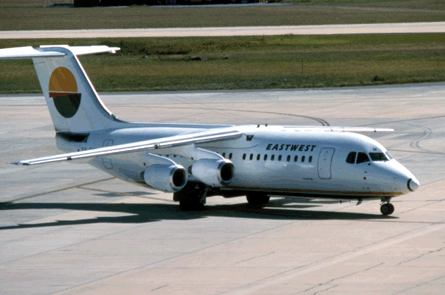Substantial damages have been awarded to an Australian airline cabin attendant for respiratory illness attributed to toxic fumes in cabin air - the first time a law court anywhere has called an airline to account for health damage caused by contaminated cabin air.
In June another case, also brought by cabin crew from the same airline group, but this time against the aircraft manufacturer, will be heard.
On 1 April the New South Wales Court of Appeal upheld a judgement against now-defunct East-West Airlines, a regional carrier in the former Ansett group.
 |
|---|
© George Canciani |
The court confirmed the award of substantial compensation to former attendant Joanne Turner for respiratory damage caused by toxic fumes when she was working in a BAe 146 regional jet. Turner has been fighting for this decision since the cabin air contamination event 18 years ago singled out for the this court case.
HOW THE CONTAMINATED AIR CASE WAS WON Susan Michaelis, a former National Jet Systems BAe 146 pilot who lost her pilot medical category to neurological illness while at that airline, is now the chief researcher to the Global Cabin Air Quality Executive. She told Flight International that former East-West stewardess Joanne Turner and her legal advisers succeeded by learning from the failures of similar cases. In several, including Michaelis' own case, she says the medical complexities and the difficulty of proving a connection between fume events and illness proved too much for non-specialist lawyers to handle. In addition, legal action was too much of a financial burden, especially since plaintiffs faced the risk of having to pay all costs. By taking the Turner case to the specialist Dust Diseases Tribunal, which was set up to decide on cases of asbestos damage, and by concentrating on one medical aspect of her damaged health - lung damage - and by citing a single specific recorded fume event rather than regular exposure, Turner's lawyer Tanya Segelov was able to prove the case to the court's satisfaction. |
On 4 March 1992, toxic fumes entered the cabin in the bleed air from the engines during a descent into Brisbane. Since then she has suffered from persistent respiratory problems. The court confirmed the award of A$139,000 ($129,000) compensation, originally awarded a year ago by the Dust Diseases Tribunal. It is to be paid by the insurers of East-West Airlines, which had appealed against the tribunal verdict.
Turner's lawyer Tanya Segelov called the decision a "significant global precedent" for pilots, cabin crew and passengers who have suffered health damage from bleed air fumes in the 146 or other types.
The aircraft manufacturer, the airlines, and the aviation authorities have recently publicly admitted that cabin fume events take place, but had, until now, successfully argued that plaintiffs could not prove the connection between their ill health and on-board fumes.
Turner says that evidence presented by Professor Allan Glanville, a thoracic, heart and lung consultant physician, established the connection.
The court has ruled that the airline knew about the risk of cabin air contamination when faulty engine oil seals leak heated oil mist into bleed air supplied to the cabin, but did not act sufficiently to mitigate the risk or its potential health effects.
A major Australian Senate inquiry in 2000 established the occurrence of the events, the presence of neurotoxic chemicals in the oil fumes, and the potential for harm to human health, but legal proof of the connection between the fumes and crew health damage has continued to prove elusive in the courts - until now.
BAE SYSTEMS STATEMENT ON TOXIC FUMES VERDICT BAE Systems is aware of the judgement of the New South Wales Dust Diseases Tribunal involving Joanne Turner. BAE Systems was not a party to those proceedings and so is unable to comment substantively on the evidence which was presented to the tribunal or the judgement itself. However, it would appear that the outcome of this case turned on facts which were particular to the plaintiff in this instance. Over the last decade BAE Systems has fully supported research into the cabin air quality issue. Moreover, a number of investigations into the BAe 146 cabin air supply have been carried out by independent scientists and government bodies including the UK Aircraft Accidents Investigation Board. These include instances where aircraft with known or suspected engine oil leaks have been tested. None of these investigations has produced evidence of any contaminant exceeding or even approaching currently recognised safety limits. |
Another cabin air contamination case is to be mediated before a Registrar in Australia in June, and if agreement between the parties cannot be reached at mediation it will automatically go on to trial.
This claim is not against the airline, although plaintiff Melissa Dray, like Joanne Turner, also worked as cabin crew on 146 series aircraft for the Ansett group, but against aircraft manufacturer BAE Systems. (For BAE Systems’ comment, see box)
Dray claims her health was damaged as a result of an 11 April 1999 cabin air contamination event, after which she was advised to accept "workers' compensation" in the form of a small disability pension for "aerotoxic syndrome".
This barred her from making further claims against the airline, hence the action against BAE Systems taken because her illness has severely affected her ability to work.
Dray says she is representing herself at court because she cannot afford lawyers.
- Learmount: Behind the toxic smokescreen
Source: Flight International



















